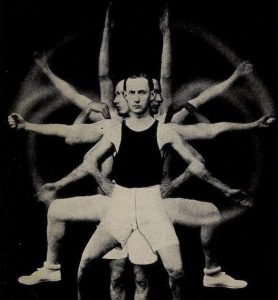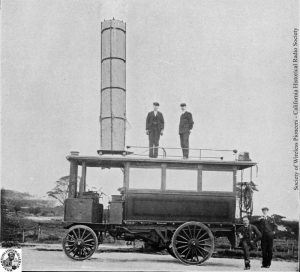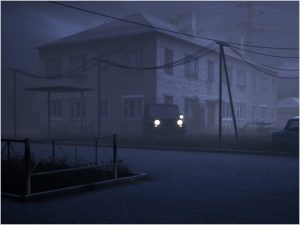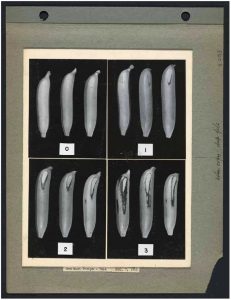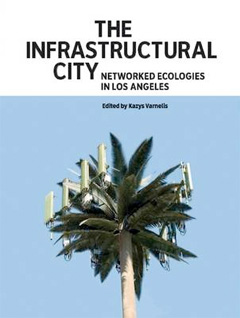 The Infrastructural City – Networked Ecologies in Los Angeles, edited by Kazys Varnelis (Amazon UK and USA.)
The Infrastructural City – Networked Ecologies in Los Angeles, edited by Kazys Varnelis (Amazon UK and USA.)
Publisher Actar says: Once the greatest American example of a modern city served by infrastructure, Los Angeles is now in perpetual crisis. Infrastructure has ceased to support its urban plans, subordinating architecture to its own purposes. This out-of-control but networked world is increasingly organized by flows of objects and information. Static structures avoid being superfluous by joining this system as temporary containers for people, objects, and capital. This provocative collection of photography, essays, and maps looks at infrastructure as a way of mapping our place in the city and affecting change through architecture.
I was waiting eagerly for The Infrastructural City – Networked Ecologies in Los Angeles. 3 reasons for that.
Number one, is Blue Monday: Stories of Absurd Realities and Natural Philosophies, Varnelis’ previous book which he co-authored with Robert Sumrell. Anyone who had that one in their hands will get my point.
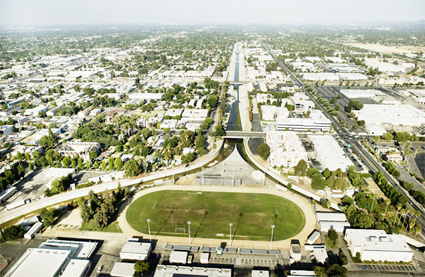 Lane Barden, Fifty-Two Miles Downstream: An Aerial Survey of the Los Angeles River and Channel
Lane Barden, Fifty-Two Miles Downstream: An Aerial Survey of the Los Angeles River and Channel
Reason number 2 is Los Angeles, the one city on this planet i should be averse to. The first time i was there i saw creatures that freaked me out: Chupa-Chup ladies -heavy and round on top, super slim on the rest of the body- and all sort of people walking around with some rather stunning attributes that had been recently implanted. I could not accept that no one ever ‘walks around the city center’ to do some shopping, have a drink and sit down in a park. And where was the city center anyway? I realized i would never survive in L.A. without a driving license. The skyscrapers were tiny Lego structures thrown in a heap by the highway. And the river. Even that poor repudiated and alien river looked fake! I should never have liked LA. I tend to measure every city to a European one. I manage that tour de force almost everywhere but in LA the attempt is more preposterous than ever. That’s what charmed me so much. That and many other things. Los Angeles is the only city in the USA where i would be tempted to live.
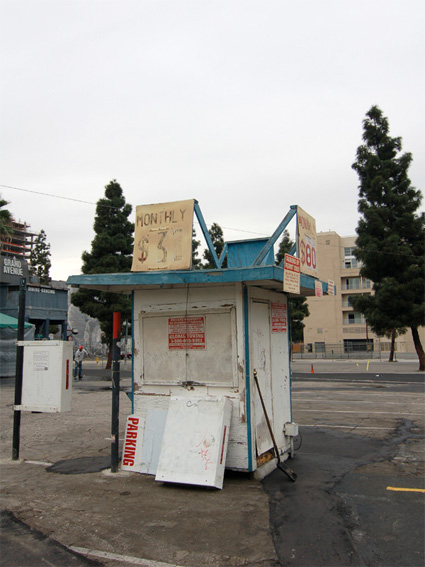 From the series Los Angeles parking booths by Mac Kane
From the series Los Angeles parking booths by Mac Kane
Let’s get to reason number 3. The Infrastructural City will drive you way beyond Los Angeles. The idiosyncrasies, stories and lessons described are thought-provoking enough to make you look at your own city with a more inquisitive eye. In this book, Los Angeles is little more than a (fascinating) case study, a pretext to explore the effects that today’s complex and distorted infrastructures, whether planned by public entities or developed by private and competing corporations, have on contemporary urbanism.
As Varnelis writes: Our goal was not modest: we set out to replace Reyner Banham‘s Los Angeles. The Architecture of Four Ecologies (1971) as the key text for understanding the city urbanistically. Instead of four ecologies, The Infrastructural City offers essays commissioned to researchers who bring the discourse on urbanism outside of its usual and sometimes way too formal boundaries. These essays cover the three scales of networks: landscape, urban fabric and the object.
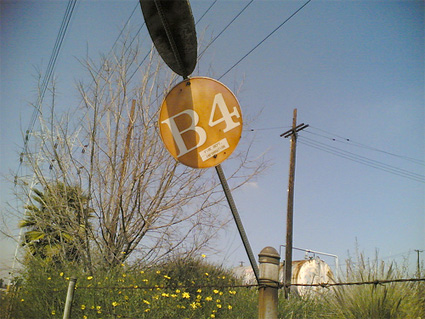
In one of the essays of the book, David Fletcher invites us to ’embrace freakology rather than bucology’. The advice could apply to many aspects of the Los Angeles. Its river, for example. Instead of following blindly the assumption that it is an eye-sore and a disgrace whose dignity would only be recovered when the concrete is removed and its native vegetation and wildlife reimposed, one should be aware of the fact that coming back to the ‘natural’ state could only be done at the cost of anihilating a complex ecosystem made of exotic and native species that has slowly found its equilibrium over decades.
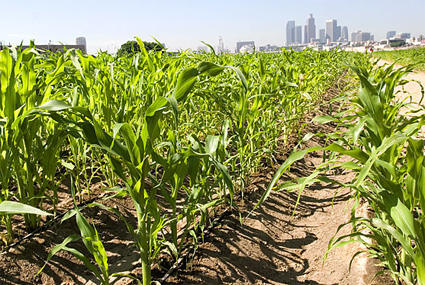 Image from the project Not A Cornfield
Image from the project Not A Cornfield
This hotchpotch of imported and original flora can be observed all over L.A. making it one of the most bio-diverse areas in the world. Most of us however, tend to reduce Los Angeles to its ubiquitous and iconic palm tree, a tree that is actually not a native species either. Most of them were planted to beautify the city for the 1932 Olympics, at a time when a city built around cars felt that it might have to re-invent its landscape. The average lifespan of the palm tree is 70 to 100. Its days under the California sun are numbered. And it doesn’t seem that the city is going to waste much tears on them as no palm tree has been invited to the Million Trees party.
Hopefully this will mean that the new breed of palm tree that double as cell antenna is going to loose some popularity as well:
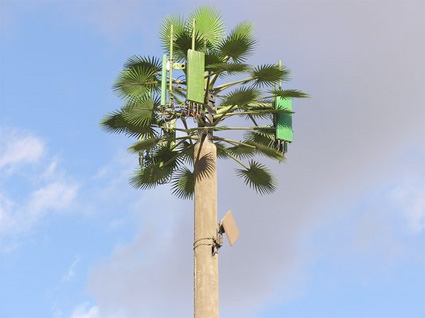 Cell phone antenna camouflaged into fake tree
Cell phone antenna camouflaged into fake tree
If trees of all sorts and a river are to be expected in a section dedicated to the landscape of L.A., lowly gravel is not. Neither is oil. Well, not in the way Frank Ruchala (don’t miss another of his essays, Recovering oiLA, you can access it on Lulu) pictures it: an actor which used to supply as much of the US’ oil demand as Saudi Arabia, an asset whose value nowadays has to compete (most often than not unsuccessfully) with real estate. Los Angeles contains one of the most intense concentration of pipelines in the world yet, the presence of the precious resource is often camouflaged behind mundane facades. As we all know now, the Industry with a big I in Los Angeles is no longer the one that earned it the nickname of ‘Oildorado.’
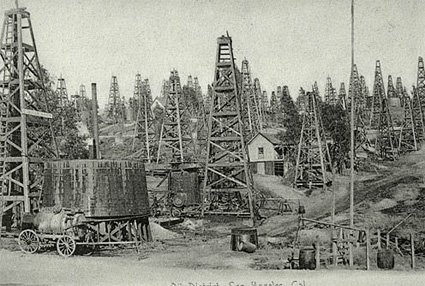 Postcard view (ca. 1900) of oil rigs in a booming giant oil field in the Los Angeles area. © Peter A. Scholle, 1999
Postcard view (ca. 1900) of oil rigs in a booming giant oil field in the Los Angeles area. © Peter A. Scholle, 1999
The rest of the book explores what is below that patch of pavement, inside the backyard garden of an unassuming house or what goes though monster warehouses. Each chapter is written by a different expert but the many photographies, graphics and a certain spirit enable the book to find its own voice.
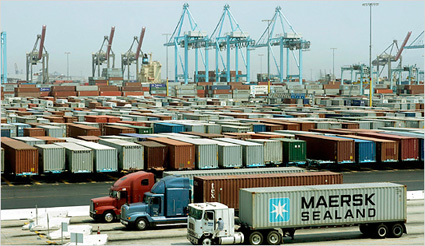 Photograph by Ric Francis/Associated Press (via)
Photograph by Ric Francis/Associated Press (via)
As i mentioned above most of the infrastructures analyzed in the book provide food for thought wherever you happen to live.
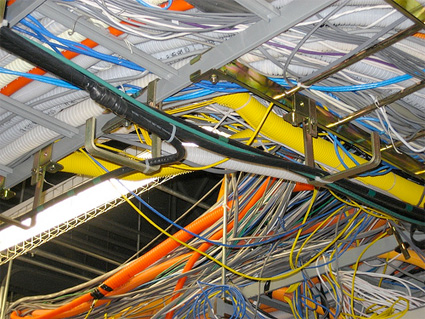 Cables overhead. Image Xeni Jardin, One Wilshire flickr set
Cables overhead. Image Xeni Jardin, One Wilshire flickr set
One Wilshire, the unassuming container of the U.S. telephone and data connections reaching across the Pacific evokes the very tangible spin-offs of information society. The analysis of Los Angeles & Long Beach’s ports, both major dispatchers of an unprecedented rise in the volume of goods from the Far East to the city and to the rest of the country, speaks to our seemingly unstoppable gluttony. I found some of the most illuminating comments in Roger Sherman‘s essay about change-based thinking, a position that invites architects and urbanists to envision their work under a different lens, one that would ‘sett a trap’ to capture potential change that inevitably occur in the lifespan of a city.
Image on the homepage from Lane Barden‘s series Fifty-Two Miles Downstream: An Aerial Survey of the Los Angeles River and Channel.

